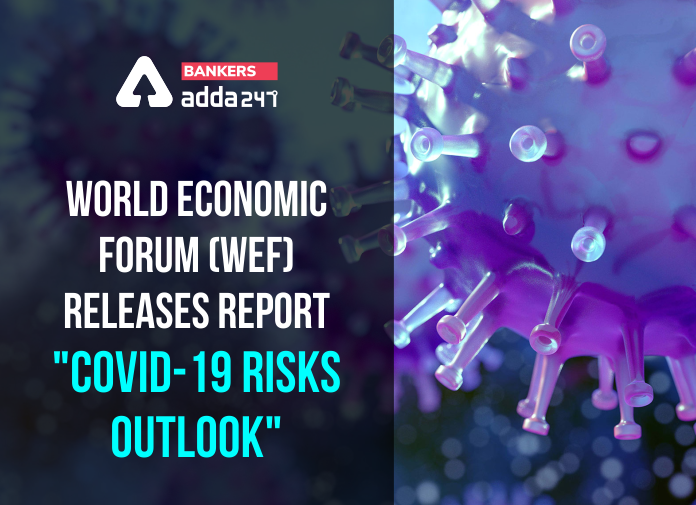World Economic Forum (WEF) has released a report titled “COVID-19 Risks Outlook: A Preliminary Mapping and its Implications”. This report is a prequel to the WEF’s annual Global Risks Report, as the work mentioned in this report will be supplemented by further works of the forum. This report indicates the view of about 350 senior risk professionals who participated in the COVID-19 Risks Perception Survey, hence identifies some key areas of concern from the responses of the participants.
About World Economic Forum (WEF):
World Economic Forum (WEF) is an international organization for Public-Private Cooperation. It was established in 1971 and is headquartered at Geneva, Switzerland. It aims to bring together the most relevant leaders from all sectors of global society, and find out the the best ways to address the world’s most significant challenges. It engages the foremost political, business, cultural and other leaders of society to shape global, regional and industry agendas.
Also Check,
- IMF releases “World Economic Outlook”
- GoI reviews extant Foreign Direct Investment (FDI) policy
- Union Cabinet Approves “Scheme for formalisation of Micro Food Processing Enterprises”
- What is Pradhan Mantri Matsya Sampada Yojana (PMMSY)?
About the report “COVID-19 Risks Outlook: A Preliminary Mapping and its Implications”:
The report titled “COVID-19 Risks Outlook” has been prepared by World Economic Forum (WEF) in partnership with Marsh & McLennan and Zurich Insurance Group. The report aims to provide a preliminary picture of the familiar risks that may be amplified by the crisis. The report captures the views of about 350 senior risk professionals who participated in the COVID-19 Risks Perception Survey. As a part of the survey, the participants were asked give their views on 31 risks across three dimensions, namely:
- most likely for the world
- most concerning for the world
- most worrisome for companies
Also Check
- Impact of Energy Efficiency Measures For Year 2018-19
- WHO Releases “State Of The World’s Nursing Report 2020”
- World Steel Association Releases “April 2020: Crude Steel Production Update”
Based on the perceptions and after thorough analysis of the participants’ responses, four key areas of significant challenges emerge from the survey. These are as follows:
- Economic Shifts: Emerging Risks from Structural Change
- Sustainability Setbacks: Emerging Risks from Stalling Progress
- Societal Anxieties: Emerging Risks from Social Disruptions
- Technology Dependence: Emerging Risks from Abrupt Adoption
According to the report, “economic risks” are regarded as the most challenging fallout from the pandemic and hence dominated the companies’ risks perceptions. It was closely followed by bankruptcy, industry consolidation, failure of industries to recover and a disruption of supply chains. Alongside this, another greatly feared risk is the geopolitical disruption to business which in the form of policies that restricts the movement of people and goods. It also combines these with the concern of another infectious disease outbreak, as well as an increase in cybercrime and the breakdown of IT infrastructure and networks.
Conclusion:
The report suggests that the perceived risks indicated in the report are not the forecasts, instead they serve as a warning of how things could turn out if early warnings are missed and the responses are handled poorly. It emphasiezes to look on the early warnings and to make the right choices. It also tells that in the 21st century the pandemic can lead to a renaissance in art and thinking, hence leading towards a new era for innovation, growth and enhanced technology.
Also Check,



 IBPS Final Result 2025 Coming Out Tomorr...
IBPS Final Result 2025 Coming Out Tomorr...
 Simple Tips to Avoid Common Mistakes In ...
Simple Tips to Avoid Common Mistakes In ...
 Important Topics & Shortcuts for IDB...
Important Topics & Shortcuts for IDB...





